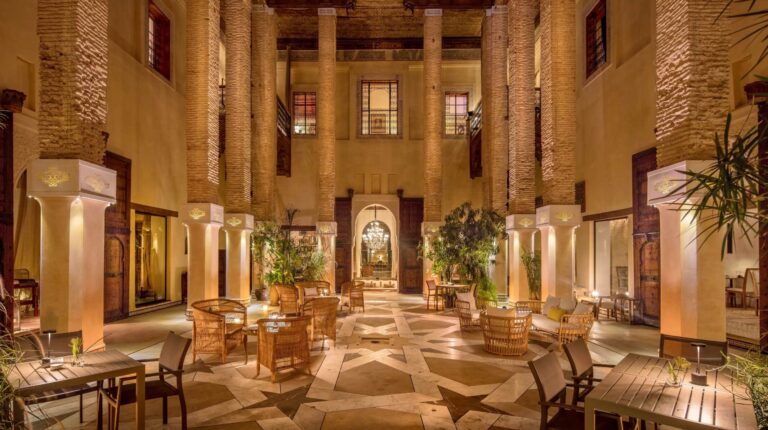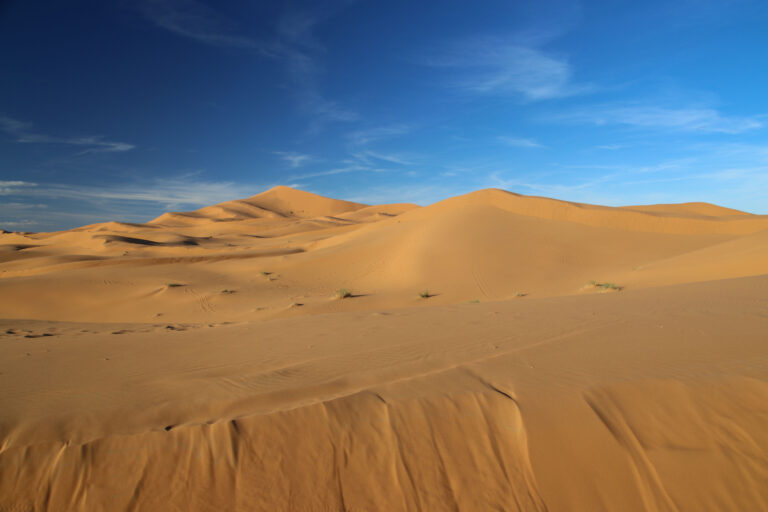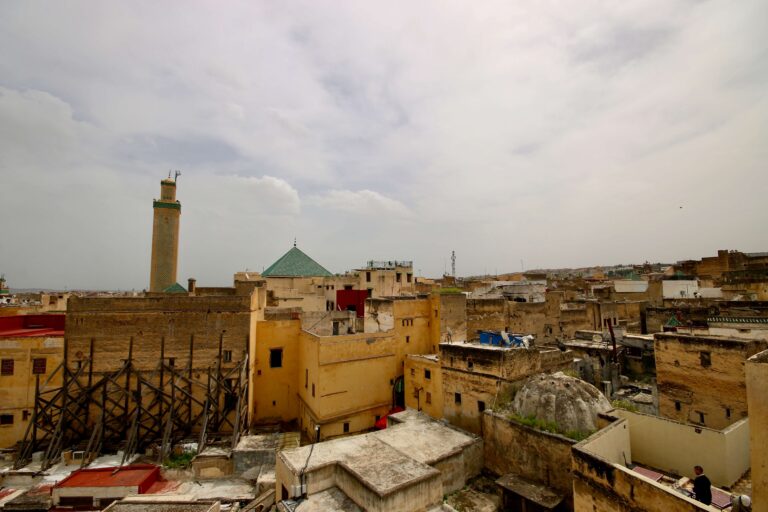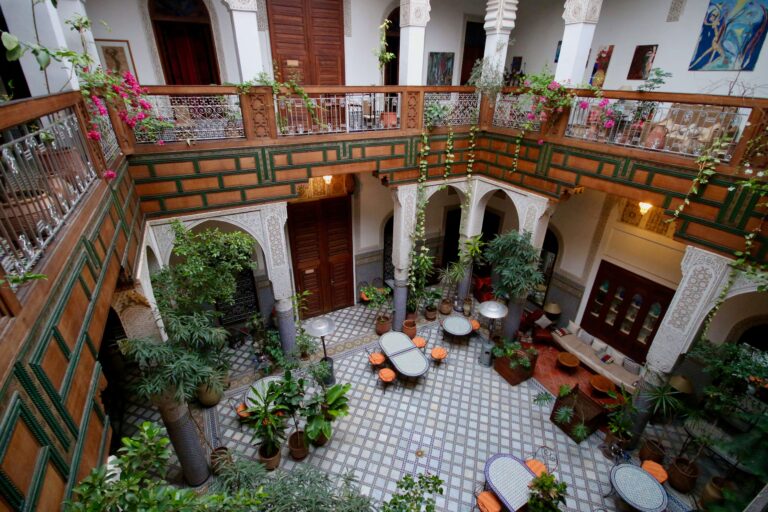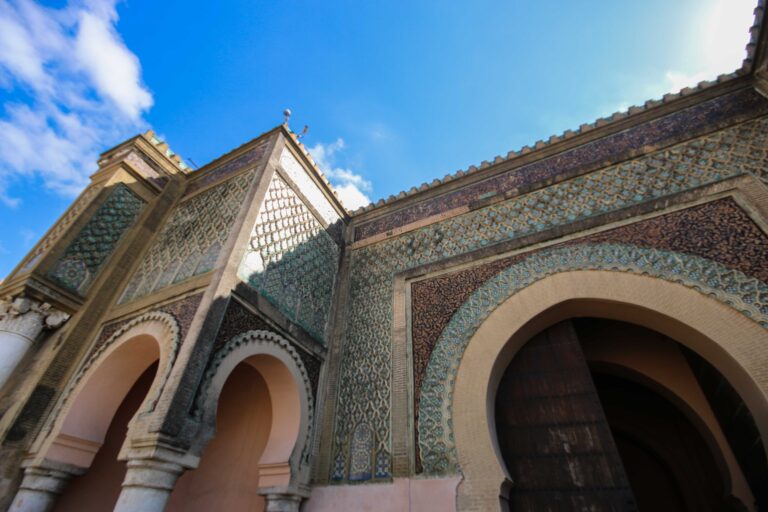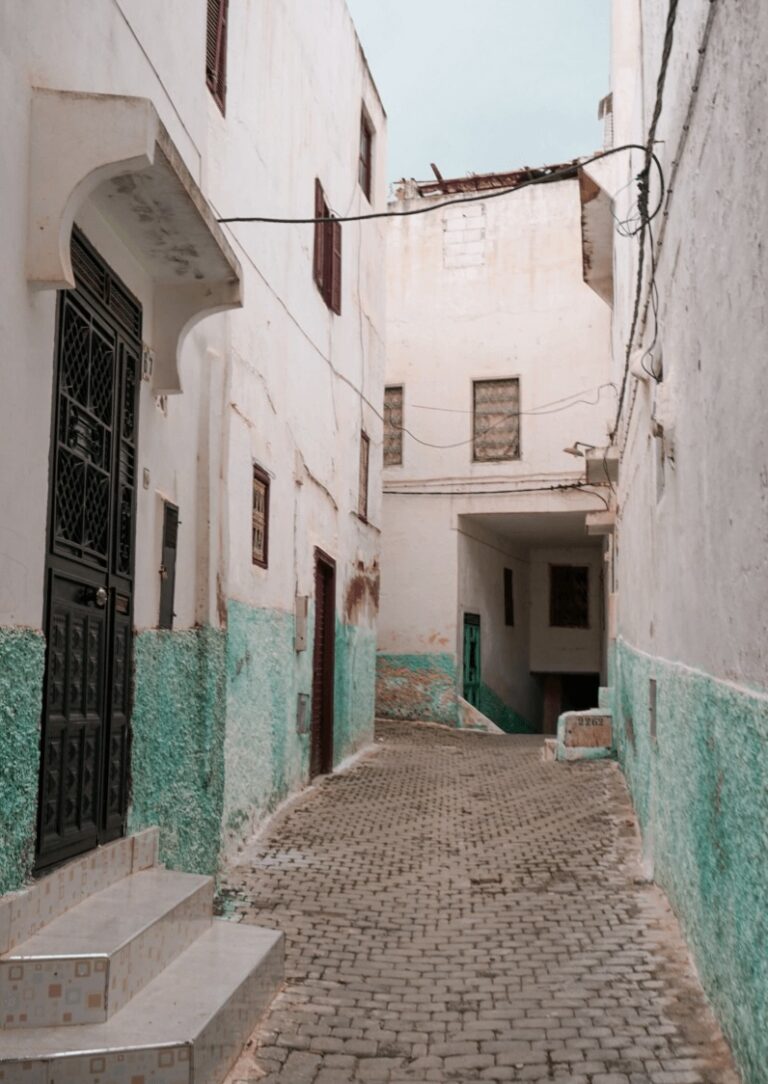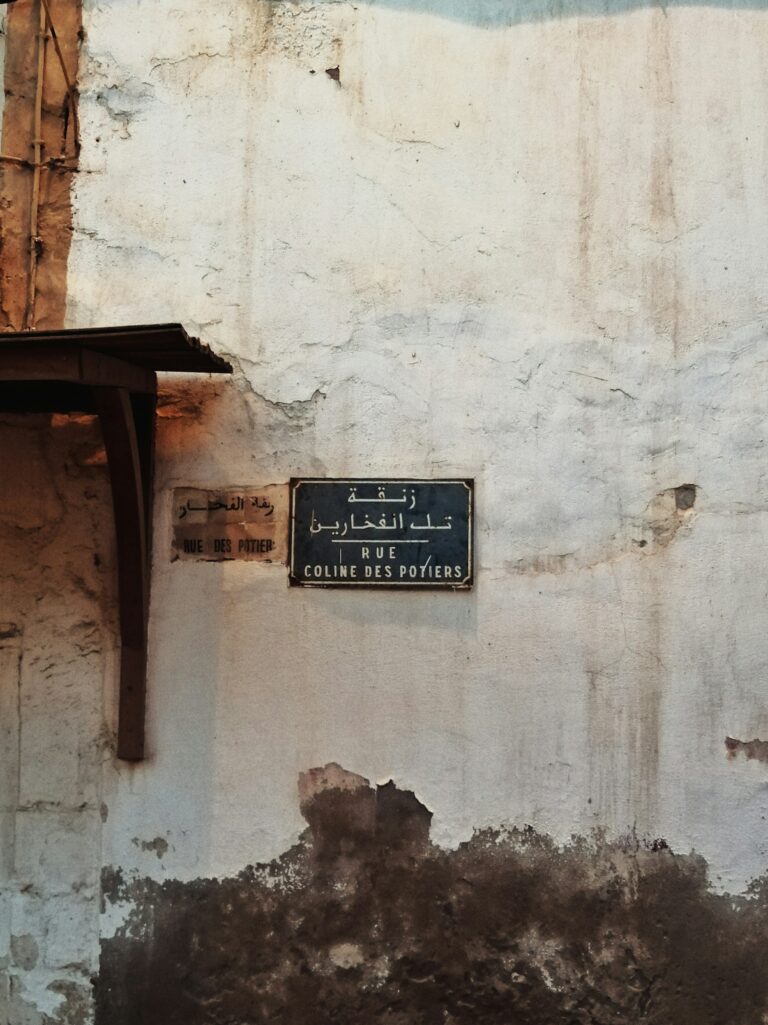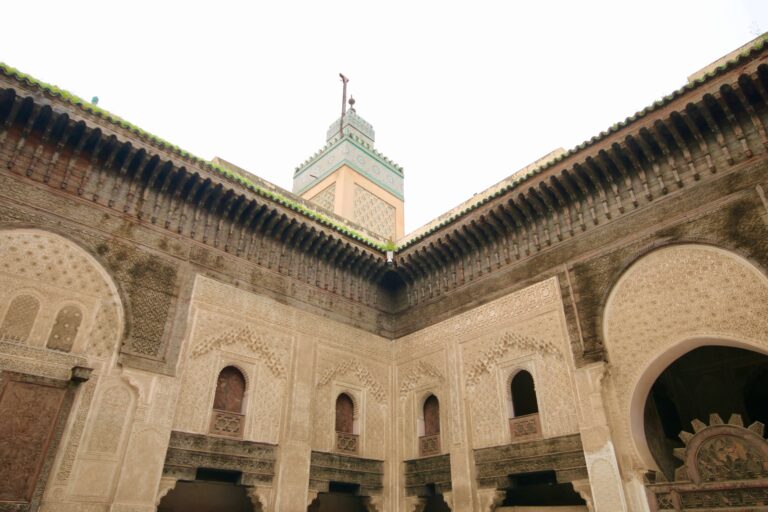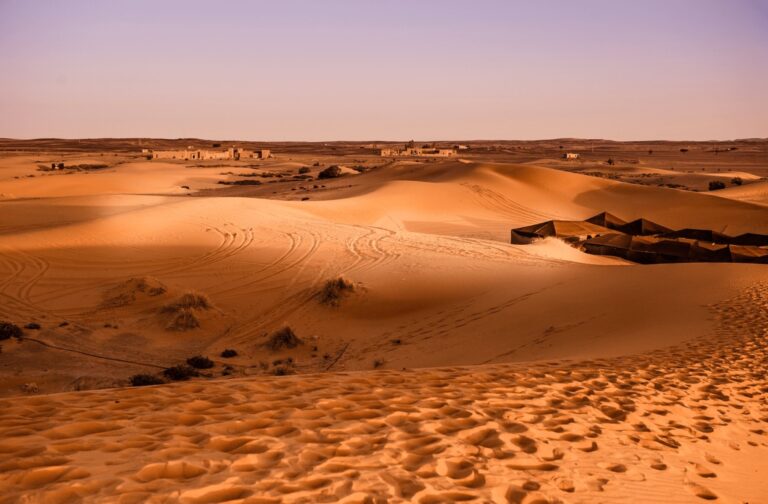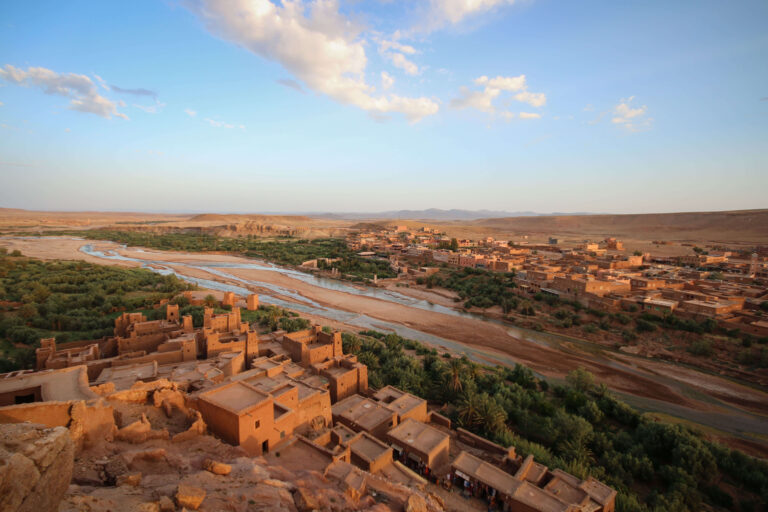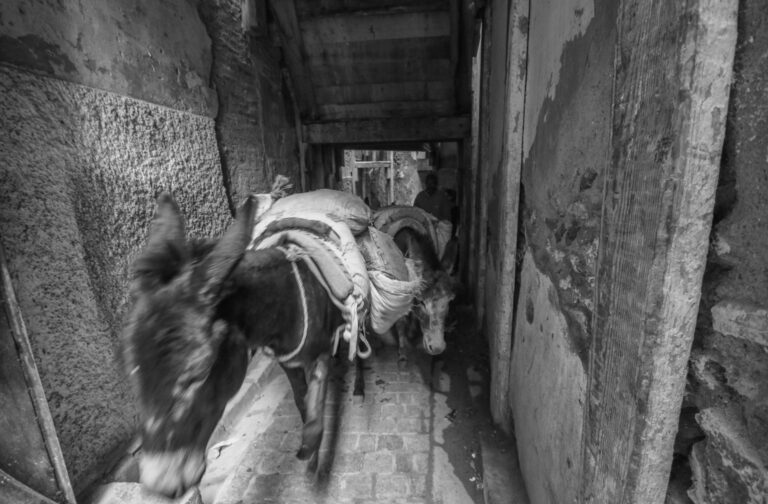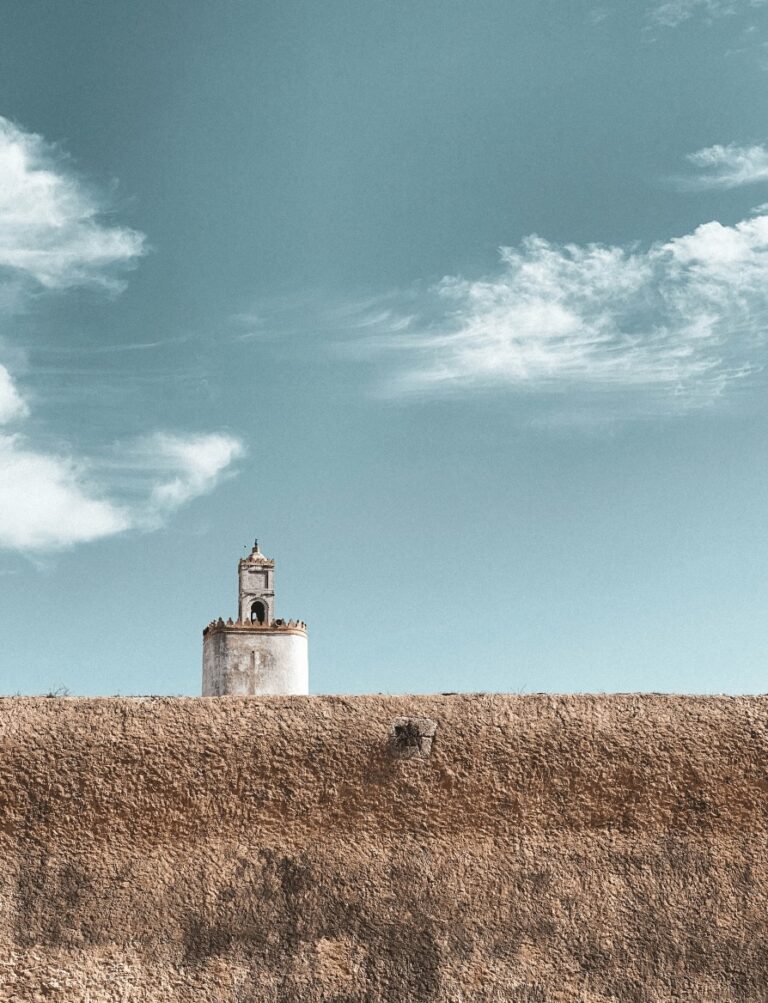6 of the Most Beautiful Madrasas in Fes
If you’re planning a visit to one of Morocco’s most ancient cities, discover 6 of the most beautiful madrasas in Fes. Some are still functioning institutions and several are open to visitors. Be sure to add them to your Fes itinerary!
Madrasas hold a revered place in the history and culture of Morocco. Over the centuries, they served as major educational hubs that played a key role in the training of young students.
These establishments are not only symbols of Morocco’s spiritual and architectural heritage. They are also vital contributors to the preservation and transmission of Islamic knowledge within the kingdom.
For tourists and travellers, madrasas are most notable for their architectural beauty, blending traditional Moroccan and Islamic design elements. Many feature serene courtyards framed by elegant archways, all adorned with exquisite mosaics, stuccos and hand-carved wood.
The craftsmanship and attention to detail evident in many of Morocco’s madrasas have made them immensely popular attractions, particularly in the city of Fes.
In this article, I’ll introduce 6 of the most beautiful madrasas in Fes, several of which are open to visitors. Some are still functioning institutions and only accessible to students and staff. Others are undergoing extensive restorations to bring them back to their former glory.
To learn more about visiting Fes, check out my Essential Travel Guide to Fes.
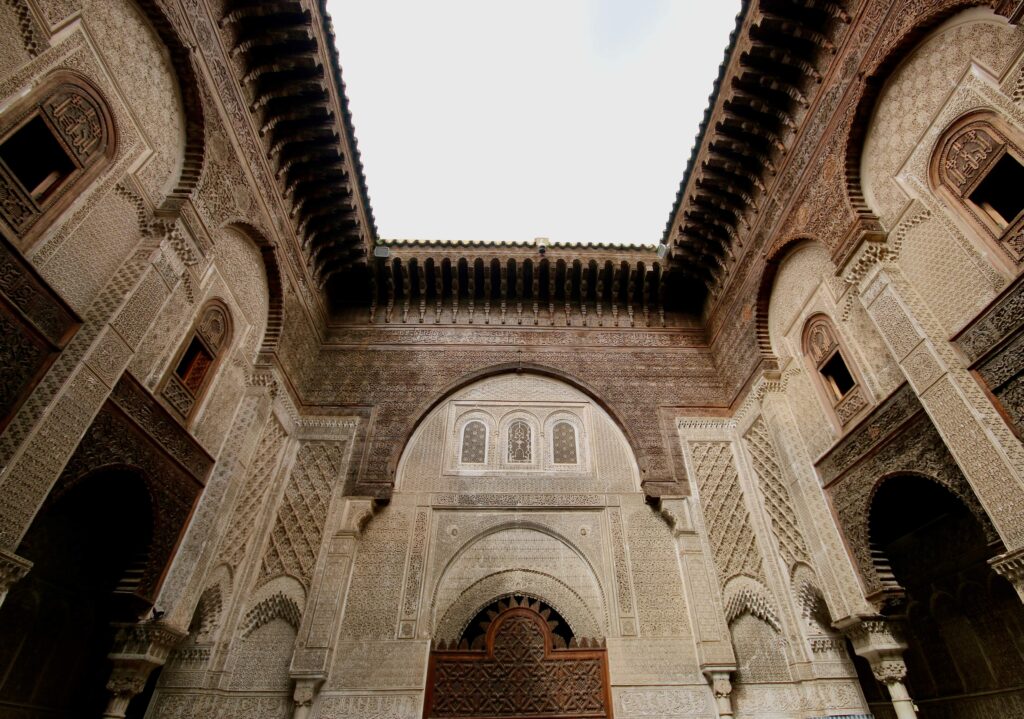
Disclosure: This article contains affiliate links, meaning I earn a small commission when you make a purchase. Affiliate links cost you nothing and ensure my content stays free!
A history of madrasas in North Africa
Madrasas are unique educational institutions that emerged in the early 11th century in northeastern Iran, before gradually spreading westward. The establishment of madrasas in North Africa has long been a topic of debate among scholars due to the scarcity of reliable historical records.
Some researchers believe the Almoravids and Almohad dynasties were responsible for introducing this influential model of learning. Others argue it was an adaptation of the well-established madrasa system prevalent in the Levant.
Over there, it had already proven its value in serving the dual purposes of religious instruction and the advancement of knowledge.
Archaeological evidence points to the Madrasa Shammiya in Tunis as the oldest documented madrasa in North Africa. It constructed in 1249 CE under the rule of the Hafsid Sultan Abu Zakariyya. This institution would be followed shortly by the Saffarin Madrasa in Fes, built in 1271 CE by the Marinid Sultan Abu Yusuf Yaqub.
These early madrasas would come to exemplify the architectural splendour and academic prestige that would define these North African centres of learning.
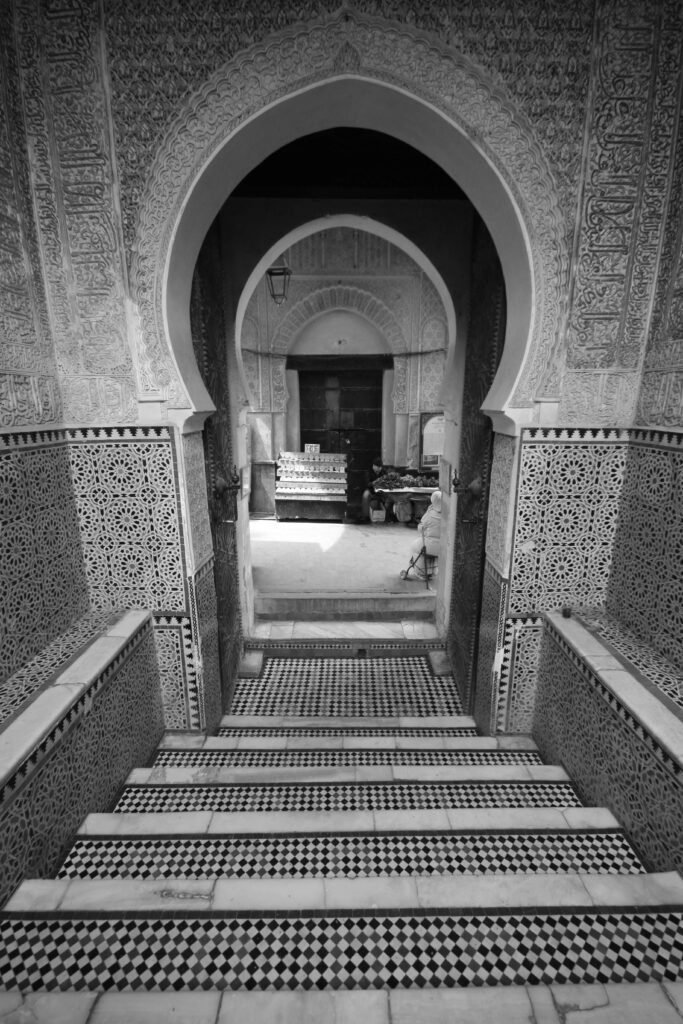
The role of madrasas in Fes
Since their establishment centuries ago, madrasas were primarily focused on training Islamic scholars. There was a particular emphasis on the study of Islamic law and jurisprudence.
It was under the rule of the Marinid dynasty that the madrasa took hold in Fes. The Marinids recognised the value of these institutions in bolstering the political legitimacy of their reign.
By patronising the construction and operation of madrasas, the Marinid rulers were able to cultivate the loyalty of Fes’s influential religious elite. At the same time, it allowed them to present themselves to the general population as protectors of Sunni Islamic orthodoxy.
The earliest madrasa in Fes, Saffarin was constructed in close proximity to Al-Quaraouiyine Mosque, the preeminent centre of learning in Fes. This was also the case with Al-Attarine and Mesbahiyya madrasas, both of which still stand today.
Unlike mosques, the madrasas provided accommodations and basic necessities for students. Many were relatively poor and hailed from outside of the city. By studying in Fes, they hoped to gain better employment back in their hometowns.
At the same time, the madrasas were not merely supportive institutions. They offered their own rigorous courses of study and allowed some Islamic scholars to build their reputations at these specialised schools.
In this way, the madrasas were not only critical to the training of Morocco’s religious and political elite. They also served as important focal points for the broader communities in which they were embedded.
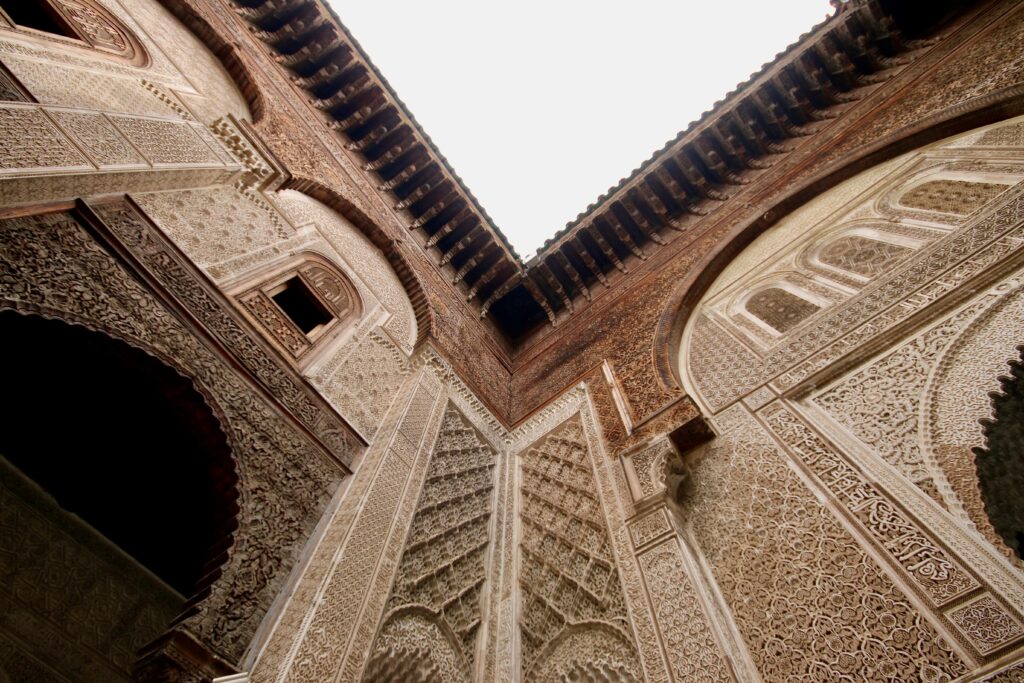
6 of the most beautiful madrasas in Fes
Al-Attarine Madrasa
Just steps from Al-Quaraouiyine Mosque is this magnificent educational institution. It was commissioned in the 14th century by the Marinid Sultan Abu Inan Faris.
Al-Attarine’s construction was entrusted to the skilled supervision of Sheikh Beni Abu Muhammad Abdallah ibn Qasim al-Mizwar. It’s said that the Sultan took a personal interest in the project.
Al-Attarine takes its name from the nearby Souk Al-Attarine, a bustling market renowned for its aromatic spices and perfumes.
The madrasa is widely celebrated as one of the Marinid dynasty’s greatest architectural achievements. It never fails to enchant with its sumptuous and harmoniously designed interior.
Honestly, it really is one of the most beautiful places I visited in Fes and noticeably tranquil after the hustle and bustle outside!
Despite the constraints of its limited physical space, Al-Attarine Madrasa showcases the ingenious spatial planning that exemplified Marinid building techniques.
At its heart lies an exquisitely ornamented courtyard that opens onto a square prayer hall. The towering walls are adorned with intricate stucco carvings and calligraphic inscriptions, while zellige tiles cover expansive sections.
Surrounding the courtyard are the simple, functional student accommodations. They provide a stark contrast to the ornate splendour of the communal spaces. Be sure to explore them! The overall effect is one of breathtaking beauty.
Opening hours of Al Attarine Madrasa: 9 am to 6 pm
Entrance fee for Al Attarine Madrasa: 20 dh
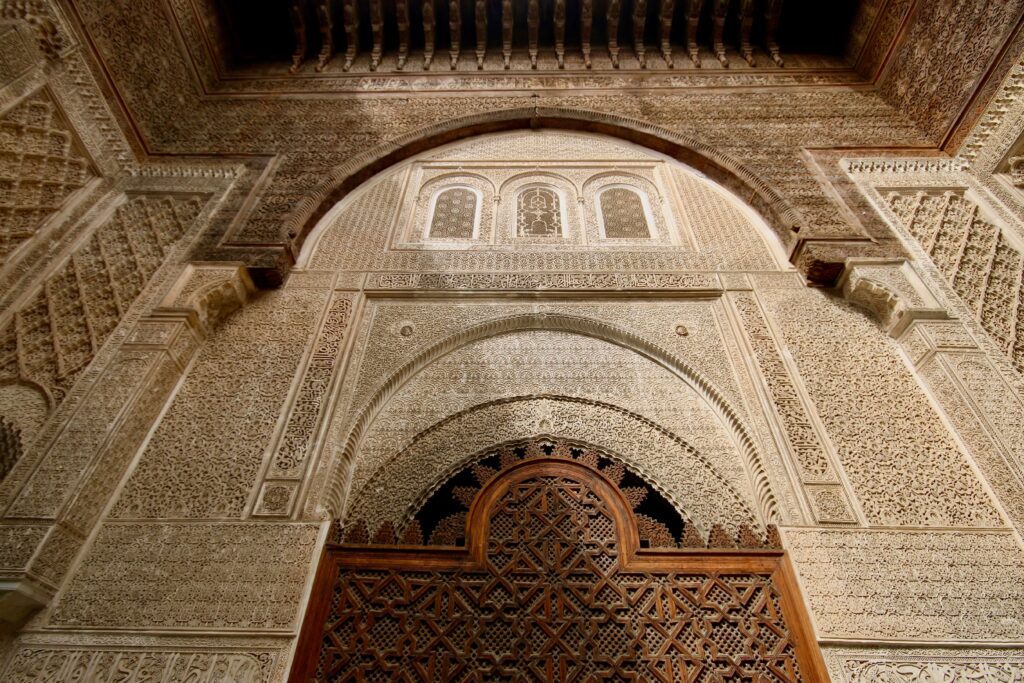
Saffarin Madrasa
Built in 1271 by the Marinid Sultan Abu Yaqub Yusuf, this madrasa lies in the heart of Fes el-Bali. The student body that graced the corridors and halls of the Saffarin Madrasa hailed primarily from the Zerhoun region (around the town of Moulay Idriss) and the Souss area (southeast of Agadir).
Such a far-reaching draw speaks to the madrasa’s growing prominence and influence over the centuries.
Spanning 750 square metres, the Saffarin Madrasa’s expansive footprint encompasses two levels of student quarters arranged around a central courtyard.
On the eastern side of the courtyard stands a high-ceilinged room that served as a prayer hall. Along its northern side is the madrasa’s ablutions hall, or mida’a. This smaller, secondary courtyard features a central water basin surrounded by numerous small rooms that housed the latrines.
While much of the madrasa’s original decoration has been lost over time, some elements have survived. This includes the stucco decorations of the prayer hall.
In addition to Arabic inscriptions, there’s a frieze of geometric motifs and a band of blind arches and windows. Also of note are the painted motifs on the wooden ceiling.
Unfortunately, the Saffarin Madrasa is not currently open to visitors.
Bou Inania Madrasa
Constructed between 1350 and 1355 under the patronage of Sultan Abu Inan Faris, this madrasa is unique. It is one of the only Islamic schools in Fes to feature a minaret.
This distinctive architectural element reflects the madrasa’s dual function. It serves not only as an educational institution but also as a congregational mosque where Friday prayers are held.
Unlike some of the other madrasas in Fes, it was not constructed close to the Al-Quaraouiyine Mosque. As such, it had to be more self-sustaining.
Today, the Bou Inania Madrasa is considered one of the most beautiful Merenid monuments in Morocco. It’s definitely one of the most popular madrasas to visit in the country. It’s also the only religious building in Fes that’s still in use AND open to non-Muslims.
In my opinion, it’s not only the incredible ornamentation but also the interplay of light and space that makes Bou Inania so special.
At its core is a large marble courtyard, flanked on either side by two grand halls. Among the decorations that cover almost every available surface are beautiful woodcarvings, elegant Kufic script and zellige tilework. It really is hard to know where to look!
As Bou Inania still has a limited role as an educational institution, you can’t venture beyond the courtyard. But as it’s one of the best-preserved madrasas in Morocco, I still think it’s most definitely worth a visit.
Opening hours of Bou Inania Madrasa: 9 am to 6 pm daily
Entrance fee for Bou Inania Madrasa: 20 dh
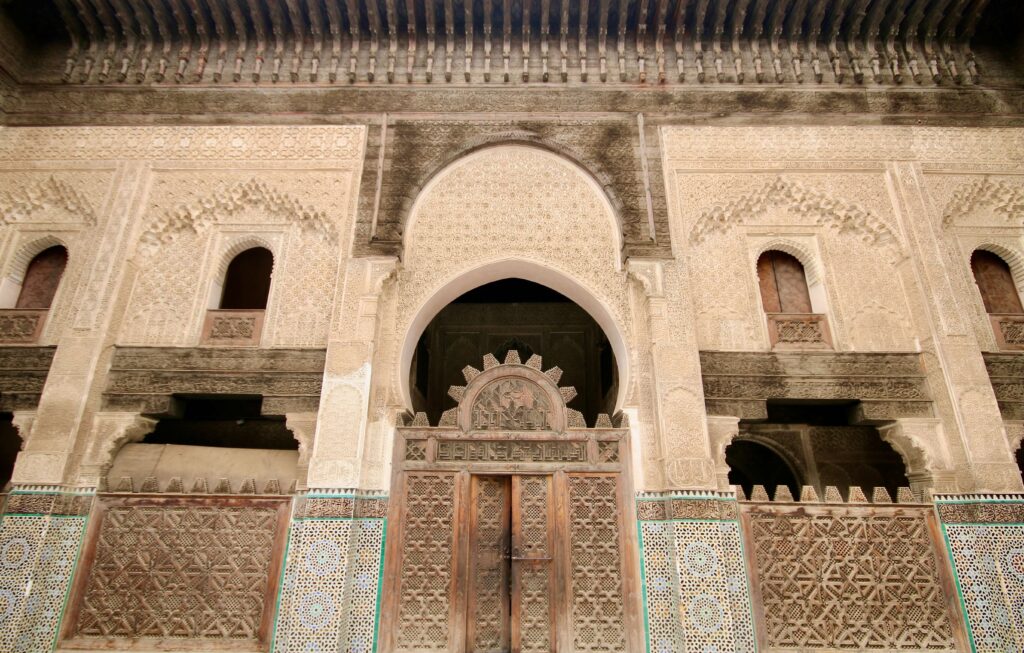
Mesbahiyya Madrasa
Commissioned in 1347 by the Merinid Sultan Abu al-Hasan, this madrasa was renowned for its lavish use of imported white marble. It earned it the nickname “School of Marble.”
Spanning 35 rooms and two classrooms, it was designed to accommodate up to 140 students from across the country. Despite its storied history and architectural significance, the Mesbahiyya Madrasa has suffered from neglect and damage over the centuries.
Portions of the structure, including the prayer hall’s dome and the ablutions room’s ceiling, collapsed. Over the years, much of the iconic marble detailing deteriorated.
However, restoration efforts undertaken in the early 1990s (and again more recently) have sought to preserve the madrasa’s remaining Marinid-era decorative elements, including the richly carved stucco of the twin-arched entryway.
When the restorations are complete, the Mesbahiyya Madrasa has been earmarked to serve as an auxiliary facility for the Al-Quaraouiyine University. This repurposing not only ensures the continued use and preservation of the madrasa but also underscores its enduring importance as a centre of Islamic learning.
The Mesbahiyya Madrasa is currently not open to the public.
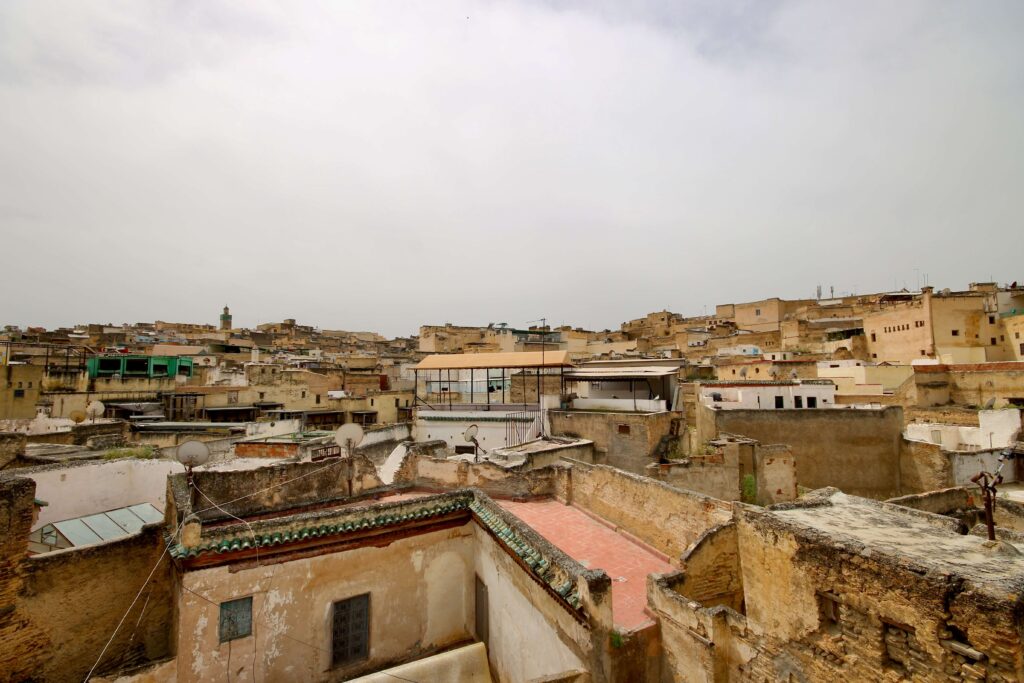
Cherratine Madrasa
Constructed in 1670 under the reign of the Alawi Sultan Moulay al-Rashid, this madrasa replaced an older structure that had fallen into disrepair.
The name “Cherratine” refers to the nearby market where rope-makers were established. It provides a glimpse into the vibrant commercial activity that surrounded this important centre of learning.
Like other madrasas in Fes, the Cherratine Madrasa was closely tied to the Al-Quaraouiyine University. It served as housing and study space for students and scholars who travelled to the city.
By the 19th and early 20th centuries, the madrasa had become a hub for students. They hailed from regions as far-reaching as Algeria, the Rif Mountains and Tafilalt, renowned for its sprawling oasis.
Built primarily of brick and cedar wood, the Cherratine Madrasa centres around a main courtyard with a fountain. This is a common feature of Moroccan madrasas.
Surrounding this central space are galleries and porticos, some adorned with arabesque carvings and stucco work. That being said, the overall decorative elements are more restrained compared to earlier Marinid-era madrasas.
Although it’s not as well-preserved or as beautiful as some of the other madrasas in Fes, I think it’s still worth visiting the Cherratine Mosque. Exploring the upper floors where the students lived is a highlight.
Opening hours of the Cherratine Madrasa: 9 am to 3 pm daily
Entrance fee for the Cherratine Madrasa: 20 dh
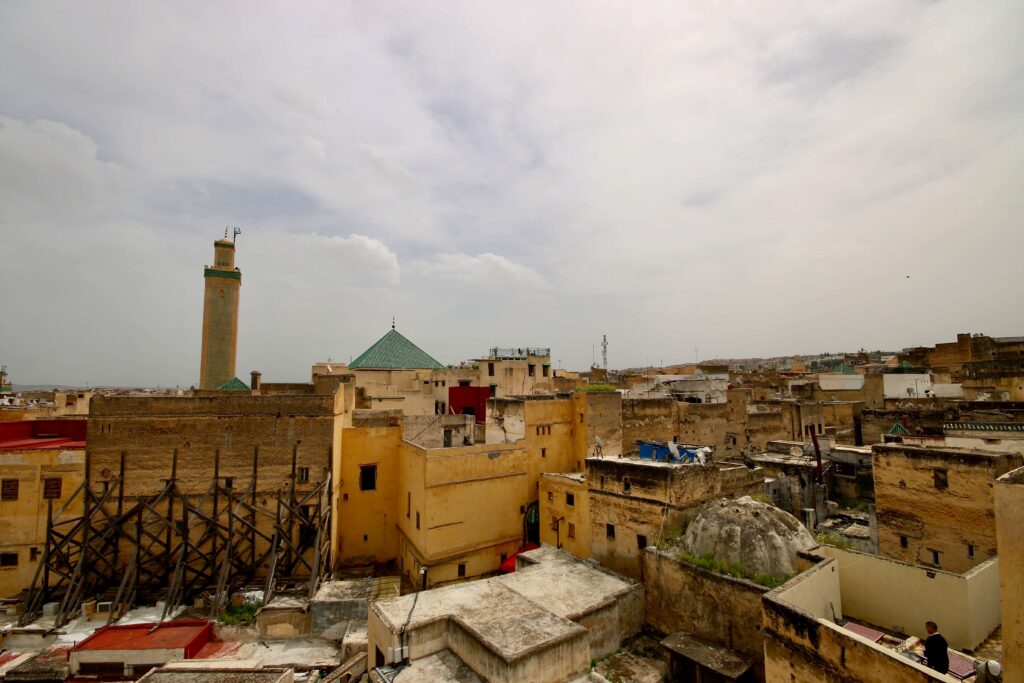
Sahrij Madrasa
Dating from 1323, the Sahrij Madrasa is an early educational institution. It owes its name to the large, central pool located within its courtyard. Adjacent is the Madrasa of the Sba’iyyin, which housed students studying the seven canonical readings of the Quran, and a separate guest house known as Dar Chiakh.
The main madrasa building contains two classrooms and accommodations for up to 26 students. These were reserved for those attending the calligraphy program at Al-Quaraouiyine University.
The structure follows the typical layout of Marinid-era madrasas. There’s a central courtyard surrounded by galleries that provide access to the student dormitories on either side. On the southern end, opposite the main entrance, sits the prayer hall, complete with a mihrab niche to indicate the direction of Mecca.
The courtyard itself is richly decorated with zellige tilework, wood and stucco carvings that reflect the architectural elegance of the Marinid era. A passage from the central courtyard leads to a smaller, secondary courtyard containing the madrasa’s latrines.
Unfortunately, the Sahrij Madrasa is currently closed for restorations and not accessible to the public.

PLAN YOUR TRIP WITH MY FAVOURITE RESOURCES:
Find hotels via Booking
Book tours and attractions via Viator or GetYourGuide
Find a rental car via Discover Cars
Book flights via Kiwi or Booking
Search for buses and trains via 12Go or Omio
Get travel insurance via SafetyWing
Buy a digital eSIM with Airalo
By purchasing through my links, you’ll be supporting my website at no additional cost to you
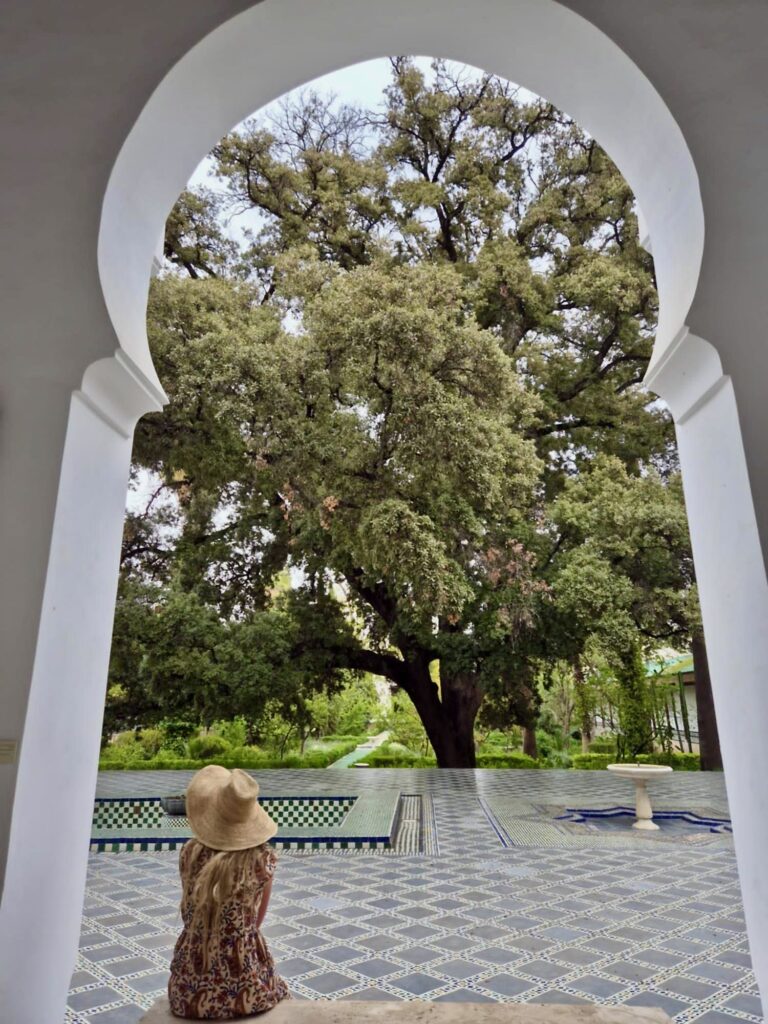
About Me
I’m Malika, a global traveller who first visited Morocco in 2014 before marrying a local and settling down in a little village on the Atlantic coast. Over the years, I’ve developed an intense love for Morocco, its incredible landscapes, storied cities and the exceptionally generous hospitality of its people.
Malika in Morocco is a place to share my years of experience exploring the country, from north to south and from the Atlantic Ocean to the Sahara Desert. As a resource for travellers visiting Morocco, I want to encourage others to experience this captivating destination the way they desire, whether that’s independently or under the expert guidance of local tour operators.
I believe strongly in supporting responsible and sustainable tourism initiatives while inspiring travel experiences that are life-impacting and mutually beneficial for both travellers and locals.
-
8 Best Luxury Hotels in Fes: Morocco’s “Cultural Capital”
Looking for the best luxury hotels in Fes? Explore this curated collection of high-end stays, including beautifully restored riads and modern retreats. Hidden gems and historic treasures await in Fes, Morocco’s cultural capital. Stays here are all about wandering through the maze-like medieval medina, uncovering artisanal wares in the souks and marvelling at the centuries-old…
-
4 Unforgettable Tours to the Sahara Desert from Fes
Looking for the best tours to the Sahara Desert from Fes? Explore this curated collection of multi-day trips, including budget-friendly small group adventures and private desert tours in Morocco. If there’s one experience that’s high on many travellers’ lists when visiting Morocco, it’s spending a night in the Sahara Desert. Having been lucky enough to…
-
5 Best Food Tours and Experiences in Fes: Home of Fassi Cusine
Looking for the best food tours in Fes or foodie-related experiences? Discover five incredible ways to experience Fassi cuisine and culture in one of Morocco’s oldest cities. Home to one of the world’s oldest cuisines, Morocco is a deservedly popular destination for foodies. It’s also a destination I’ve been lucky enough to eat my way…
-
11 Highly-Rated Riads in Fes: Morocco’s “Cultural Capital”
Looking for the best riads in Fes? Discover 11 inspiring places to stay in this ancient city, all of which abound with the charm of traditional Moroccan residences. Fes is one of Morocco’s most storied cities, with a history stretching back to the 8th century. It’s an incredible place to visit, not only for its…
-
An Imperial Gem: Essential Travel Guide to Meknes
Looking for the best things to do in Meknes or highly recommended places to stay? Discover the ideal time to visit, tips for getting around and the best tours in this essential travel guide to Meknes. Located less than an hour’s drive from Fes, Meknes is often overlooked by travellers, despite its historical significance as the…
-
A Holy Town: Essential Travel Guide to Moulay Idriss Zerhoun
Looking for the best things to do in Moulay Idriss Zerhoun or highly recommended places to stay? Discover the ideal time to visit, tips for getting around and the best tours in this essential travel guide to Moulay Idriss Zerhoun. Perched dramatically on the slopes of the Khyber and Tazga hills, Moulay Idriss Zerhoun is…

